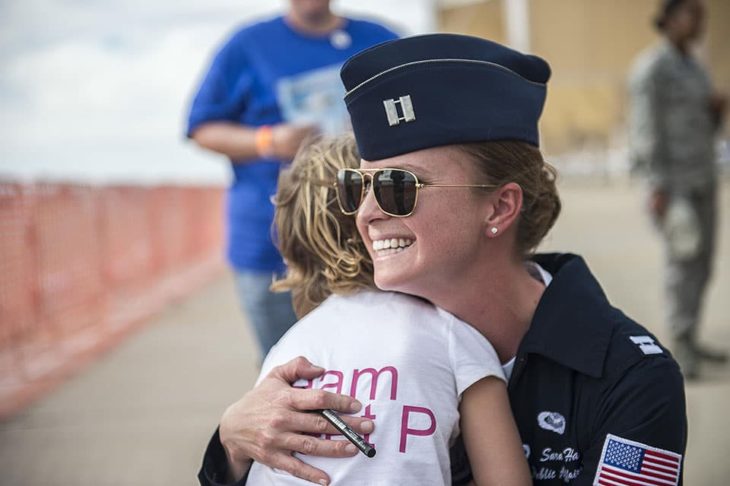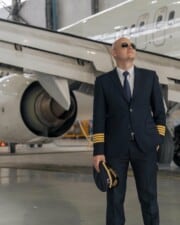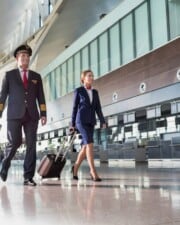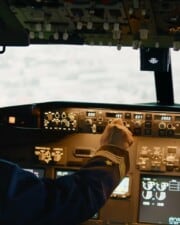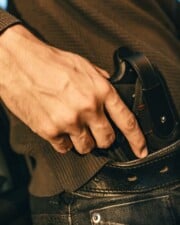If you’ve ever experienced glare while driving or riding in a car, then you’ve experienced a fraction of what pilots experience while flying. With no cloud cover to protect from the sun (and clouds, in fact, reflecting sunlight), it’s no wonder that pilots need sunglasses to see. However, can they wear any sunglasses, including polarized sunglasses?
In short, there are guidelines around appropriate eyewear for pilots, and those guidelines exclude polarized sunglasses. Governing bodies determined that polarized sunglasses impact pilots’ abilities to see and perform their jobs.
For more on appropriate sun protection for pilots, including why pilots can’t wear polarized sunglasses, keep reading this article.
What Are Polarized Sunglasses?
Before we get into why pilots can’t wear polarized sunglasses, it’s important to understand the difference between polarized lenses and regular sunglasses.
Polarized sunglasses are sunglasses that have been treated with a special filter that reduces glare. The way the filter works is by blocking horizontal rays of light, which are light rays that are reflected from objects. Only vertical light, which is light directly from the sun, can pass through the filter.
Polarized sunglasses are recommended for settings that have a lot of glare, such as out on the open water, because glare and refracted light cause eyestrain. Images through polarized sunglasses appear darker, but they are clearer and easier to see.
Can Pilots Wear Polarized Sunglasses?
If polarized sunglasses are recommended for situations where there is a lot of glare, then it seems as if it’s a no-brainer that pilots should wear them. After all, what’s more reflective than a bank of clouds closer to the upper limits of the atmosphere?
However, the FAA recommends against wearing polarized sunglasses, and some airlines ban them altogether. Pilots usually cannot and should not wear polarized sunglasses.
Why Can’t Pilots Wear Polarized Sunglasses?
There is a simple explanation as to why pilots can’t wear polarized sunglasses—safety. Polarized sunglasses do too good a job at blocking glare and reflected light. While this is helpful when looking at a body of water or bank of clouds, it isn’t so helpful when looking at an instrument panel. Pilots report distortions in their vision, such as swirls and black spots, when wearing polarized lenses in the cockpit.
Many instruments in a cockpit are treated with an anti-glare coating to make it easier for the pilot to read them with light bouncing in from around the plane. However, when a pilot is wearing polarized sunglasses, those instruments become hard to read. Polarized sunglasses also make it difficult to read anything on an LCD screen, which is becoming more and more common for control panels, because these panels emit polarized light.
Polarized sunglasses also make it harder to see through airplane windshields due to the unique striation of the glass in the windshield. Most airplane windshields are laminated, already reducing glare, and the polarized lenses interact strangely with the lamination to prevent a pilot from seeing clearly.
Finally, there are some situations while flying when seeing glare or reflected light is actually useful. Sometimes, light doesn’t reflect off of clouds or bodies of water but off of another plane’s body. In some crowded situations, directions from ground control are not enough to avoid a collision, and a pilot needs to maneuver quickly to avoid a crash. Polarized lenses impact the pilot’s ability to react in time.
Which Sunglasses Can a Pilot Wear?
While pilots cannot wear polarized sunglasses, these restrictions don’t apply to regular sunglasses. In fact, the FAA and other governing bodies actually recommend wearing sunglasses while flying. In the air, pilots are exposed more to harmful radiation and light than they are on the ground because there are fewer clouds to filter sunlight.
Sunglasses block radiation that causes damage to eye tissue and prevents eyestrain and fatigue, which are massive problems for pilots, who need their vision to be in peak condition at all times. Sunglasses also protect the pilot from physical debris such as dust and flying objects, which are more common when flying in open cockpits.
However, besides polarized sunglasses, official FAA guidelines recommend against other types of sunglasses. Sunglasses with yellow tints or “Blue Blocking” filters are not recommended because they affect a pilot’s ability to see instruments. Tints or coatings that block more than 85% of light are also forbidden because they limit a pilot’s vision too much.
Finally, the FAA also recommends against photochromic or transition lenses as they limit vision too much during the transition phase. Even a few seconds of darkening are enough to cause an accident. These lenses are also not as good at blocking UV light and don’t always transition properly in the cockpit.
Outside of these guidelines, pilots are free to choose whichever sunglasses they want, including the frame and material they prefer.
Related Posts
